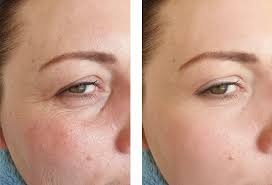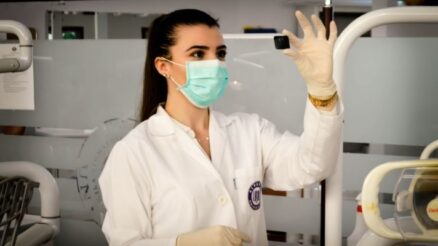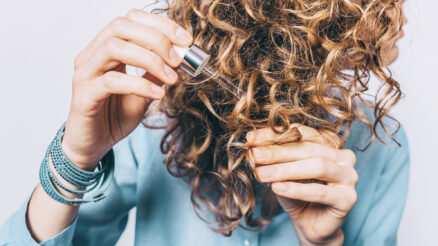Introduction
Retinol has become one of the most popular skincare ingredients, praised for its ability to improve skin texture, reduce acne, and minimize signs of aging. Whether you’re new to retinol or considering adding it to your routine, understanding the before and after transformation is crucial. This article will walk you through how retinol works, what changes to expect, and tips to maximize its benefits.
Retinol Before and After: What to Expect
How Retinol Transforms Your Skin
Retinol is a vitamin A derivative that promotes collagen synthesis and increases cell turnover. Over time, it helps to fade dark spots, reduce wrinkles, unclog pores, and smooth out skin texture. However, retinol is not an overnight miracle. It takes patience and consistency to see significant improvements.
Common Before-and-After Changes
- First few weeks: Possible irritation, dryness, peeling, or purging (especially for acne-prone skin).
- 4-6 weeks: Skin starts adjusting, and early improvements in texture and tone become noticeable.
- 3 months and beyond: Fine lines appear reduced, dark spots lighten, and acne clears up significantly.
The Retinol Purge: What Happens in the First Few Weeks?
One of the most discouraging parts of using retinol is the initial purging phase. This happens because retinol speeds up cell turnover, bringing clogged pores to the surface faster. While this may seem like a negative effect, it’s actually a sign that retinol is working.
How to Minimize Side Effects
- Start with a low concentration (0.025% – 0.05%) and gradually increase.
- Use retinol only 2-3 times a week initially.
- Apply a gentle moisturizer after retinol to reduce irritation.
- Always wear sunscreen during the day to prevent sensitivity and damage.
Real Retinol Before and After Results
Week-by-Week Changes in Skin Appearance
- Week 1-2: Dryness, flaking, mild irritation, and possible breakouts (purging).
- Week 3-4: Skin starts adjusting; irritation decreases, and texture feels smoother.
- Month 2-3: Visible improvement in acne, fine lines, and pigmentation.
- 6 months – 1 year: Long-term transformation with firmer, clearer, and youthful-looking skin.
How Long It Takes to See Results
Patience is key with retinol. Most people see noticeable changes within 6-12 weeks, but full benefits appear after 6 months to a year.
How to Use Retinol for the Best Results
To achieve the best before and after transformation, follow these guidelines:
- Use retinol at night: Sun exposure can degrade retinol and make skin more sensitive.
- Apply a pea-sized amount: More isn’t always better; excessive application can cause irritation.
- Moisturize after retinol: Helps reduce dryness and flaking.
- Avoid using with harsh ingredients: Combining retinol with AHAs, BHAs, or benzoyl peroxide can cause excessive irritation.
Tips for Achieving the Best Retinol Before and After Results
Dos and Don’ts for Beginners
- Do start slow – Introduce retinol gradually (once or twice a week, then increase use).
- Do use sunscreen daily – Retinol makes skin more sensitive to UV rays.
- Do hydrate – Keeping skin moisturized helps minimize irritation.
- Don’t use too much – Overuse can lead to severe peeling and discomfort.
- Don’t mix with strong actives – Avoid using retinol alongside acids in the same routine.
Common Mistakes to Avoid
- Applying too frequently too soon – Can lead to excessive peeling and irritation.
- Skipping sunscreen – Can result in redness, hyperpigmentation, and increased sensitivity.
- Not using it consistently – Irregular use won’t deliver noticeable results.
Retinol Before and After for Different Skin Concerns
Retinol for Acne: What to Expect
- Before: Clogged pores, frequent breakouts, and post-acne marks.
- After (3-6 months): Clearer skin with reduced acne and scars.
Retinol for Wrinkles and Fine Lines
- Before: Visible fine lines and loss of skin elasticity.
- After (6 months+): Firmer skin with smoother, less noticeable wrinkles.
Retinol for Hyperpigmentation and Dark Spots
- Before: Uneven skin tone with sunspots or acne scars.
- After (3-6 months): Brighter, more even complexion with faded pigmentation.
Retinol vs Other Skincare Ingredients: Which One Works Best?
Retinol vs Bakuchiol
- Bakuchiol is a plant-based alternative to retinol, offering similar benefits with less irritation.
Retinol vs Vitamin C
- Vitamin C brightens skin and evens out tone, while retinol targets wrinkles and acne.
Retinol vs Peptides
- Peptides improve hydration and skin barrier function, complementing retinol’s anti-aging effects.
Frequently Asked Questions About Retinol Before and After
Q: Can I see results in a week?
A: No, retinol takes time. Initial effects may be visible in 4-6 weeks, but full benefits require 3-6 months of consistent use.
Q: What if my skin reacts badly?
A: Reduce application frequency and focus on hydration. If irritation persists, try a lower-strength retinol or switch to bakuchiol.
Q: When should I stop using retinol?
A: If you experience extreme redness, swelling, or an allergic reaction, discontinue use and consult a dermatologist.
Conclusion
Retinol is a game-changer for improving skin health, but results take time and patience. The before-and-after transformation is worth the wait, with noticeable improvements in acne, wrinkles, and pigmentation. By following the right routine, using it consistently, and protecting your skin with sunscreen, you can achieve smoother, clearer, and younger-looking skin.
If you’re starting your retinol journey, stick with it, be patient, and your before-and-after results will be worth the effort!
READ MORE : Fix Crooked Teeth Without Braces





